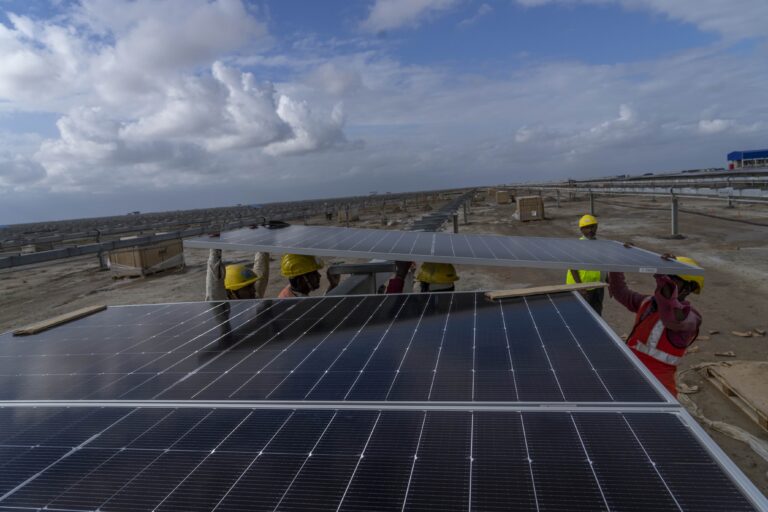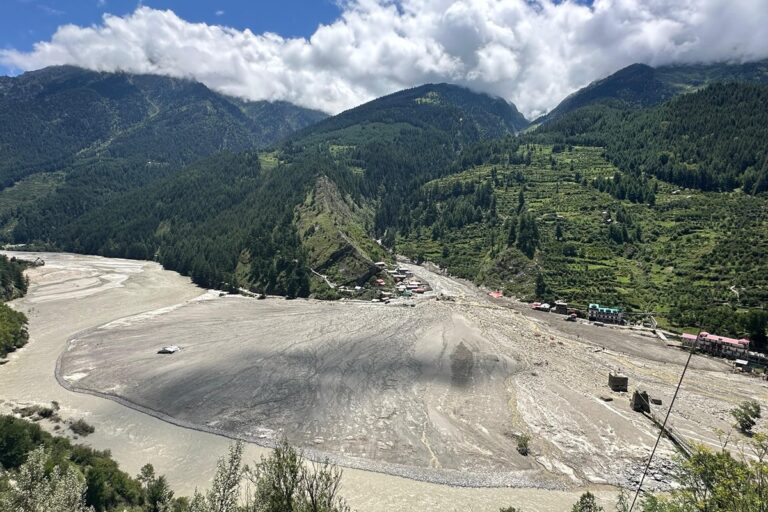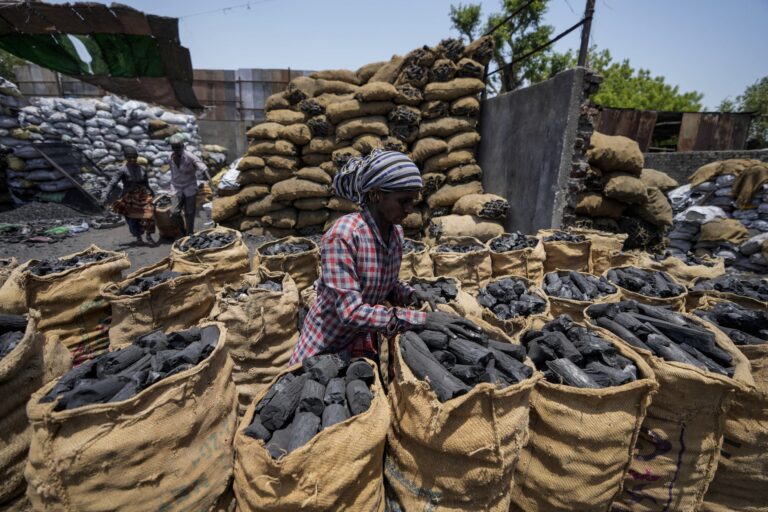- COP29 aims to finalise the framework for a global carbon market to facilitate international cooperation and financial support for climate action.
- Though Article 6 a framework for the carbon market was adopted in 2015, key issues still pending resolution include double counting, transparency, registry systems, and authorisation protocols.
- There are concerns of developing countries getting overburdened with mitigation goals with low-cost mitigation options going to wealthier nations. Experts stress the importance of national safeguards and infrastructure for equitable participation.
It’s been almost a decade since the global climate pact, the Paris Agreement, was adopted, in 2015. Yet, a key component, the Article 6, a framework for international climate cooperation and financial support to developing nations through a global carbon market, remains unimplemented. Negotiators meeting at the upcoming climate conference, COP29, in Baku, Azerbaijan, are expected to finalise the elements needed to operationalise Article 6.
Though the Paris Agreement 2015 paved the way for a new era of carbon trading, its implementation rules are pending. Efforts stalled in 2018 and 2019, with further delays caused by the COVID-19 pandemic and the 2020 COP was postponed to 2021.
At the 2021 COP in Glasgow, parties adopted the Article 6 Rule Book means there was an agreement on a global carbon market mechanism (GCMM). Under the GCMM, host countries will approve and authorise carbon emission reduction or removal projects. They will decide whether the approved projects will support their own Nationally Determined Contributions (NDCs) or be used for international trading of the carbon emission reductions. The approved projects have to also satisfy ‘additional’ criteria, which means they can be undertaken only with the support of carbon market and also they must deliver real, measurable, and long-term benefits.
A year later, at the 2022 COP27 in Sharm el-Sheikh, reporting rules, registries, governing bodies, etc. were established. At COP28, countries failed to adopt decisions due to lack of consensus on key issues including the negotiations around the process and timing for authorisation, as well as the scope for changes and revocation in authorisations, reporting rules, registries, and how to deal with inconsistent information reported by countries, explains Beatriz Granziera, a Senior Policy Advisor at Nature Conservancy, a global environmental non-profit. These issues will be discussed in Baku, as experts say Article 6 will be a top agenda item for negotiators during COP29.

Isa Mulder, a policy expert on global carbon markets at Carbon Market Watch, an independent not-for-profit research organisation, says that for this year’s COP, Article 6 is one of the key priorities of the Azerbaijan presidency. “We expect a lot of pressure on Parties to adopt a decision that would finalise the rulebook. At the same time, Parties remain pretty far apart on several key issues,” she said.
A framework for global cooperation
Article 6 facilitates international cooperation for countries to meet their NDCs with cost reductions. It provides three ways of international cooperation: Article 6.2 and Article 6.4, which are market mechanisms that enable the trade of carbon credits or internationally transferred mitigation outcomes (ITMO) and Article 6.8, a non-market mechanism.
ITMOs refer to a unit like carbon credit, representing a tonne of greenhouse gases reduced or removed from the atmosphere. “An ITMO is defined as a real, additional, and verified emission reduction or removal that is authorised by the host Party for use towards another Party’s NDC, international mitigation purposes,” says a guidebook prepared by Oxford Climate Policy published in 2022.
The Article 6.2 is a mechanism that allows countries to trade emission reduction or removal through bilateral or multilateral agreements.
The Article 6.4 is the successor to the Kyoto Protocol’s Clean Development Mechanism (CDM) where everything is centralised. The UN body, known as Article 6.4 Supervisory Body, is supposed to oversee the whole process, including registering projects.
Article 6.8 is a non-market mechanism that helps countries implement their NDCs, without relying on carbon markets.
Area of concern
The concept of a market-based mechanism to reduce emissions was first agreed upon in the 1997 Kyoto Protocol. Under this, developed or industrialised countries had binding emissions targets and they could buy mitigation outcomes achieved abroad. For this, the Kyoto Protocol established a Clean Development Mechanism (CDM) that generates Certified Emission Reductions (CERs) from mitigation projects in (developing) countries without emission caps. As there was no emission reduction obligation for developing countries that hosted these mitigation reduction activities, their role was limited to granting letters of approval, explains the guidebook. The CDM has been criticised for lack of authenticity, transparency and data manipulation. Now, developing countries also have climate goals to meet under the Paris Agreement that superseded the Kyoto protocol as a principal regulatory instrument governing the global response to climate change. It complicates carbon trading.
Meanwhile, a global voluntary carbon market has flourished in the absence of a clear mechanism from the UNFCCC. The market increased from $48 million in 2005 to $1900 million in 2022. However, it shrank 61% to $723 million in 2023 due to several controversies regarding lack of transparency, etc. The benefit of such a market has also been questioned.
“The world community is trying to ensure that they don’t repeat the past mistakes of CDM or what we have been observing in the voluntary carbon market, says Trishant Dev, a Programme Officer, Climate Change at Centre for Science and Environment (CSE), a New Delhi based think tank.

Preventing double counting of emissions reductions is at the core of the negotiations around Article 6. To avoid double counting and ensure there is no overestimation of mitigation, countries came up with the concept of a corresponding adjustment, an accounting process where the host country cannot count a mitigation achievement (emission reduction) if it has been exported to another country, explains Granziera from Nature Conservancy.
To achieve this goal, Article 6 has provision of robust registries and authorisation. The registries include a national registry, an international registry, and a mechanism registry. A CSE report released in 2023 explains that each participating party will have its dedicated registry equipped with unique identifiers to record and manage ITMO activities. Similarly, the secretariat will maintain an international registry within its Centralized Accounting and Reporting Platform (CARP). “Registries would be important to prevent double counting and promote transparency in carbon trading,” the report says.
“The ability to transfer mitigation outcomes between the different types of registries and what constitutes a ‘first transfer’ were contentious issues at COP28,” says the University of Oxford report.
Subrata Chakrabarty, Associate Programme Director, Climate, WRI India, says that at COP27 in Sharm El Sheikh and COP28 in Dubai, several issues remained unresolved, mainly concerning authorisation and how different registries will interact with each other. Key points under authorisation included the process and timing — specifically, how and when host countries will issue authorisations. Another focus was on the content and format of authorisation statements. The most challenging issue was the possibility of changing or revoking authorisations after issuance, a point made by a few developing country blocks citing it as their sovereign right. Other parties opposed it, saying it could create market uncertainty, especially for credit buyers who seek assured authorisation stability.
This brings another contentious issue related to transparency and information sharing with the UNFCCC. The EU wants to ensure maximum transparency, while the United States of America (USA) last time argued that sharing so much information poses a security concern. Like minded group of countries (LMDCs) including Saudi Arabia and India, have argued that so many rules are being carved out for all this mechanism, and some of them have to be left to developing countries because of national sovereignty issues, Trishant Dev from CSE informed.
A debate on low-hanging fruits
Since United Nations Framework on Convention on Climate Change (UNFCCC) parties have not finalised the mechanism and operationalised the market, countries are already making bilateral deals. Ghana has signed Article 6.2-based bilateral agreements with Singapore, Switzerland, Sweden, and South Korea. In 2024, Switzerland and Thailand achieved an important milestone becoming the first countries to conclude an Article 6 transaction. “This highlights that Article 6.2 deals will likely continue to advance, despite uncertainty from the negotiation rooms,” says Granziera, from Nature Conservancy.
On the other hand, the voluntary carbon market (VCM) also looks promising for market players. Ernst & Young, one of the big four accounting networks, published a report on the voluntary carbon market in October, stating that while scandals and shortcomings have shaken stakeholder confidence, carbon credits still play an essential role in achieving net zero.
Given these facts, experts feel a strong mechanism is needed to regulate carbon market. Citing a CSE study on VCM in India, Trishant Dev says that cheap offsets are being sold. Now, when Article 6 kind of a market operationalises, the country needs to ensure that low-cost mitigation options, which can be done within the country with its own money, should rest within the country and be counted within its NDCs. “If we sell the low-cost mitigation options outside the country, then what we are left with for our NDCs is a high-cost mitigation option,” he said.

For this, the country needs to estimate the cost of its NDCs to see what it can authorise for a deal under Article 6. It also needs infrastructure capacity. Experts say this is a challenge for developing countries, especially Africa.
Chakrabarty from WRI India says that, if properly implemented, Article 6 can ensure the flow of finance and technology to the countries that are not able to afford them with their own domestic finance. For example, wind and solar are now a usual business in India, but offshore wind is still cost-intensive. Here, the financial gap can be replenished by the carbon finance coming through Article 6. India has listed 14 such high-cost technologies open for the trading of carbon credits under bilateral/ cooperative approaches under the Article 6.2 mechanism. Other countries may follow a similar path, he says.
However, studies question the claim that money is being funneled in large amounts to local communities in the regions, which are in desperate need of significant climate finance from rich countries.
Isa Mulder says, “There are possibilities of Article 6 carbon markets reinforcing rather than alleviating the burden for developing countries. As most mitigation outcomes will likely take place in the global South, and these will be used to offset the emissions of the global North, you see a displacement of responsibility – business as usual can continue in the global North while the South has to carry both the consequences as well as the mitigation of climate change.”
Precautionary measures include ensuring robust national arrangements are in place before engaging in carbon markets. These arrangements can consist of, for example, mandatory benefit sharing, mitigation sharing, and social and environmental safeguards, Mulder says.
Observers will be watching how parties at COP29 work to make such a deal, ensuring Article 6 achieves its intended goal of global cooperation for finance and technology.
Banner image: Worldwide protests for an ambitious, fair climate treaty during COP15. COP29 in Baku is expected to achieve consensus on climate finance, Article 6, and other key issues. Image by Takver via Wikimedia Commons (CC-BY-SA-2.0).














